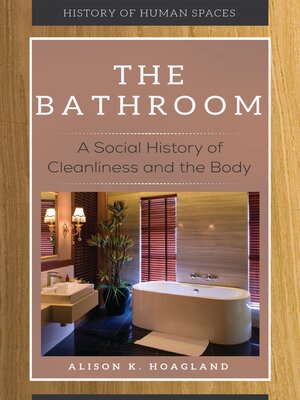The Bathroom
ebook ∣ A Social History of Cleanliness and the Body · History of Human Spaces
By Alison K. Hoagland

Sign up to save your library
With an OverDrive account, you can save your favorite libraries for at-a-glance information about availability. Find out more about OverDrive accounts.
Find this title in Libby, the library reading app by OverDrive.



Search for a digital library with this title
Title found at these libraries:
| Library Name | Distance |
|---|---|
| Loading... |
This book gives a complete history of the American bathroom and describes how the smallest yet most complex room in the American house is at the nexus of personal behavior and public investment.
The Bathroom: A Social History of Cleanliness and the Body is the first scholarly treatment of the American bathroom—as a space in the house, through nearly two centuries. After a brief nod to precedents set by other countries and to elements of the bathroom that may be placed in different parts of the house, this book traces the development of the bathroom in the American house since the Civil War, when the bathroom began to take shape.
The bathroom is considered in light of many socially relevant themes, such as cleanliness, sanitation, technology, and consumerism. Taken as a whole, the book bridges the gap between the public and private infrastructure of the bathroom and reveals the ways in which the space transforms its occupants into consumers. Its language is jargon-free, making it ideal for students, general readers, and researchers.
The Bathroom: A Social History of Cleanliness and the Body is the first scholarly treatment of the American bathroom—as a space in the house, through nearly two centuries. After a brief nod to precedents set by other countries and to elements of the bathroom that may be placed in different parts of the house, this book traces the development of the bathroom in the American house since the Civil War, when the bathroom began to take shape.
The bathroom is considered in light of many socially relevant themes, such as cleanliness, sanitation, technology, and consumerism. Taken as a whole, the book bridges the gap between the public and private infrastructure of the bathroom and reveals the ways in which the space transforms its occupants into consumers. Its language is jargon-free, making it ideal for students, general readers, and researchers.







